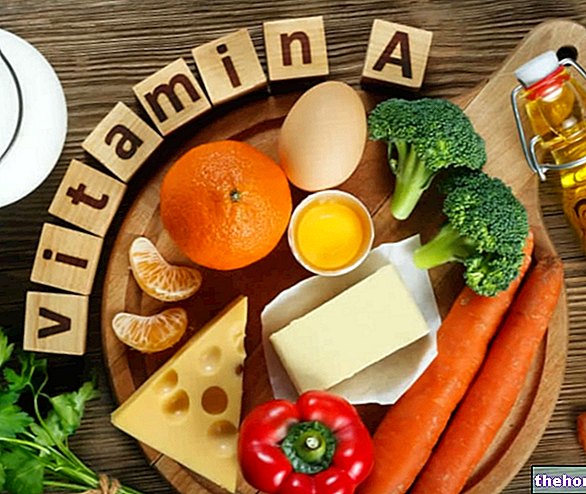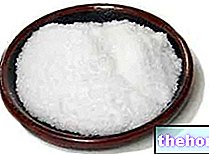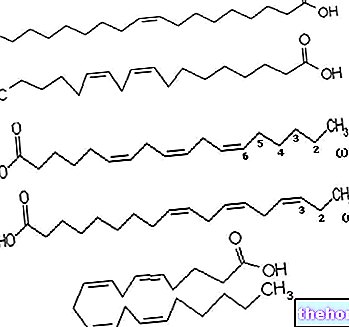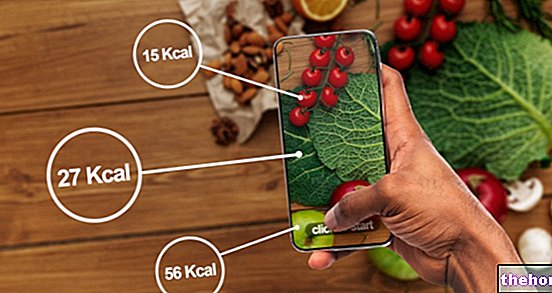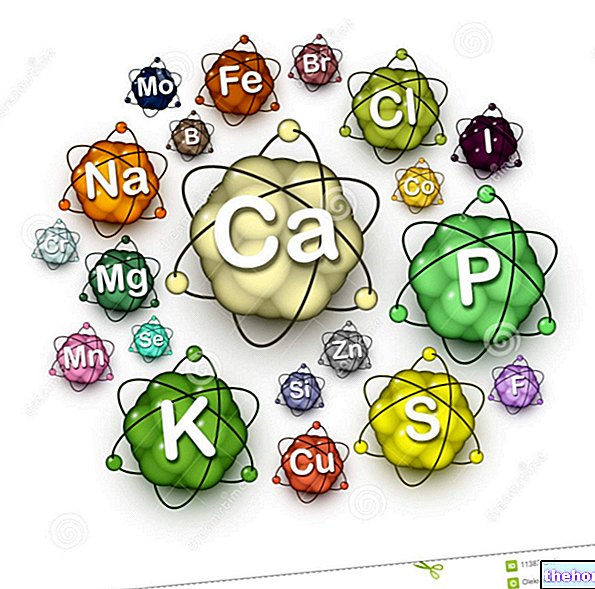This article aims to remind readers (professionals and laymen) that, despite the current tendency to favor the "increase in the protein percentage in the diet to the detriment of the carbohydrate, the latter" (represented by the sum of simple carbohydrates and complexes) is of "FUNDAMENTAL importance in human nutrition and in particular in the maintenance of sports performance.
Carbohydrates or carbohydrates are caloric nutrients made up of carbon, hydrogen and oxygen;

IN A BALANCED REGIME CARBOHYDRATES COVER 55-60% OF THE FOOD RATION, they have the function of KEEPING GLYCEMIC HOMEOSTASIS (concentration of GLUCOSE in the blood) and are used above all during intense work, especially in physical exercise.
Oxidized, carbohydrates provide an average of 4.1 kcal / g and REPRESENT THE MAIN ENERGY SUBSTRATE OF THE CENTRAL NERVOUS SYSTEM; furthermore, carbohydrates form part of the nucleic acids (ribose and deoxyribose) and of some enzymes and vitamins.
Due to its importance in maintaining blood sugar, glucose (simple carbohydrate) is stored in the form of glycogen (complex carbohydrate); the latter is present in the muscles (about 70%), in the liver (about 30%) and in the kidneys (about 2%). Once the glycogen stores are depleted, the speed of re-synthesis of the reserves is estimated from 5% to 7% per hour; furthermore, USING A BALANCED CALORIC REGIME, ASSOCIATED WITH COMPLETE MUSCLE REST, at least 20 hours are required for total reconstitution.
Glycemia, whose value varies in physiological conditions between 3.3 and 7.8 mmol / l (60-140 mg / 100 ml), can be defined as "the reflection of the" balance between production and use ". liver and kidney continuously introduce glucose into the bloodstream to prevent blood sugar from dropping below 3.3-5 mmol / l.
After taking the meal, the glucose absorbed in the intestine is released into the blood, increasing blood sugar up to 130/140 mg / dl; consequently, the secretion of INSULIN (FUNDAMENTAL HORMONE AT THE "GLUCOSE ENTRY" INSIDE OF ALL TISSUES WITH THE EXCEPTION OF THE NERVOUS) increases and FAVORS THE RESYNTHESIS OF GLYCOGEN. On the contrary, when in conditions of prolonged fasting the glycaemia falls below normal values, the body responds by lowering the production of insulin in order to conserve blood glucose and ensure the proper functioning of the central nervous system. In a similar situation, the cells that need energy production can use the lipid substrate through the B-oxidation of fatty acids, but to do this in an optimal way a small amount of carbohydrates is always required; if after a few days of fasting the glycaemia proves insufficient to support the central nervous system, the risk of NEUROGLYCOPENIA (condition that determines CONVULSIONS, COMA AND DEATH) would consequently increase.
In addition to promoting glycogen synthesis, insulin tends to switch off glycogenolysis, favoring the lowering of blood sugar. It is of vital importance for the regulation of energy metabolism as it REPRESENTS THE ONLY HORMONE WITH A HYPOGLYCEMIC EFFECT, while glucagon, adrenaline, cortisol and somatotrope (counter-regulating or counter-insular hormones) stimulate the degradation of reserves with a hyperglycemic effect.
- HYPERglycemia = stimulation of insulin secretion and inhibition of the release of hormones against regulators
- Hypoglycemia = inhibition of insulin secretion and stimulation of the release of hormones against regulators
However, it is wrong to consider blood glucose regulation as an isolated process, as it IS INTIMALLY CORRELATED TO THE METABOLISM OF FATS AND PROTEINS; everything is mediated by extremely sophisticated hormonal mechanisms capable of ensuring an optimal amount of metabolic energy to the cells of the organism.
In prolonged fasting, or following LARGE PHYSICAL EXERCISE VOLUMES, glycogen stores are depleted and energy can only be provided by the oxidation of fatty acids and by the NEOGLUCOGENESIS of ALANINE (transformed into pyruvate and inserted in the Krebs cycle) resulting from the catabolism of muscle proteins. In addition to the latter, albeit to a lesser extent, glycerol, lactate, and OTHER AMINO ACIDS (such as aspartate, valine and isoleucine which are convertible into intermediates of the Krebs cycle) contribute to the production of glucose. too active neoglucogenesis favors the hyperproduction of ketone bodies by the liver; in conditions of hypoglycemia, the latter represent AN "IMPORTANT ENRGETIC SOURCE for extrahepatic tissues, but due to their acidity, they CAN ALTER THE BLOOD pH AND FAVOR THE APPEARANCE OF THE SIDE EFFECTS INDUCED BY KETO-ACIDEMIA.
Curiosity
Many practitioners of physical culture and some nutrition experts evaluate carbohydrates as NOT essential elements, as their physiological homeostasis is partly guaranteed by the neoglucogenesis process. However, observing the energy production cycle and evaluating the intensity of metabolic activation in endurance athletes, it is appropriate to specify that:
"in the Krebs cycle, a fundamental stage of cellular respiration capable of producing NADH and FADH2 (which will subsequently enter the respiratory chain), the starting substrate Acetyl-Coenzyme A (deriving from glycolysis of glucose and B-oxidation of fatty acids) REQUIRED of an immediate CONDENSATION with OXALACETATE by citrate synthase. Oxaloacetate is the starting and ending molecule of the Krebs cycle, and can be obtained from the demolition of asparagine and aspartic acid (non-essential amino acid) , BUT much more quickly and effectively by the conversion of PIRUVATE by pyruvate carboxylase.
Considering that pyruvate is a molecule deriving from the glycolysis of carbohydrates (macronutrients introduced with the diet in a rapid and selective manner), while asparagine is an amino acid present in limited quantities in food (and its synthesis from scratch is not however a process of rapid use), in my opinion it is possible to state that in cellular respiration and especially in the energy metabolism of the endurance sportsman, carbohydrates perform a fundamental function to say the least ".
Glycemic index
Carbohydrate metabolism can be expressed in terms of the glycemic index (GI); this index highlights the different impact of carbohydrates on glycemia and insulinemia. In particular, the GI is equal to the ratio between the glycemic response of a given food and the reference value, multiplied by 100. The reference food it can be white bread or glucose and the carbohydrate dose considered is 50 grams.
The GI is useful for defining the food quality of the pre-race meal (which must have a low metabolic rate), and the IMMEDIATE one (within one "hour) after the race (which, on the contrary, will be characterized by the speed of digestion , absorption and metabolization EVEN INDEPENDENT insulin very high). Studies carried out on athletes who practice moderate and prolonged activities have shown that the intake of carbohydrates during sports does NOT positively influence physical activity in terms of metabolism and performance (even if the potential for saving and restoring the muscle glycogen); it therefore seems more logical to choose meals with high amounts of low GI carbohydrates before performance.
Bibliography:
- Physiology of man – edi ermes - chapter 15
- Nutrition physiology - pages 401-403

